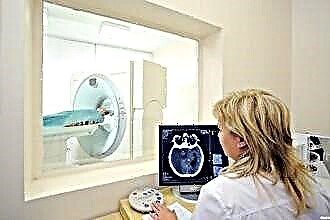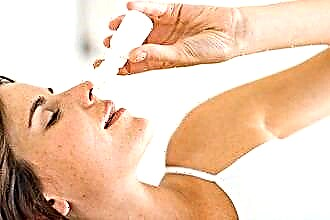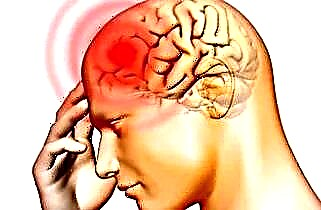The inflammatory process in the mucous membranes of the maxillary paranasal sinuses is called sinusitis. It can occur in two main forms - acute and sluggish. If the inflammation lasts more than 4 weeks, then it turns into a chronic form, which is characterized by a wave-like course: after an exacerbation, a calm period (remission) sets in, after which, in turn, after a while, an exacerbation occurs again. This condition exhausts the patient, the ailment spreads to neighboring organs. Therefore, the treatment of chronic sinusitis is the most important task for the restoration of the body.
Reasons for the development of sluggish sinusitis
 Long-term exposure to pathogenic microflora on the mucous membranes of the air pockets is the main reason for the development of a latent form of the disease, which often proceeds almost imperceptibly, but which must be eliminated.
Long-term exposure to pathogenic microflora on the mucous membranes of the air pockets is the main reason for the development of a latent form of the disease, which often proceeds almost imperceptibly, but which must be eliminated.
Basically, chronic sinusitis in adults and children is caused by bacteria, much less often by fungi and viruses. Sometimes the analysis of the contents of the infected cavity indicates a complex lesion by different pathogens.
Factors contributing to the development of the disease:
- Disturbed nasal breathing due to changes in the flow of inhaled air due to mechanical obstacles (deformation of the nasal septum, thorns on it, cysts and polyps).
- Barotrauma to the bones of the skull.
- Transition of infection to the sinus through a thin dividing wall from the oral cavity in the presence of dental diseases (periodontitis, caries, pulpitis).
- Ingress of filling material into the air chamber during inaccurate filling of teeth.
- Untreated acute maxillary sinusitis.
- The presence in the nasopharynx of sources of pathogens (pharyngitis, adenoids, tonsillitis).
- Hypothermia.
- Allergic reactions.
- Weakening of general and local immunity due to seasonal hypovitaminosis or the presence of a serious illness.
- Irritation of the mucous membranes when smoking or staying in rooms with polluted air.
Possible complications from the disease
For the treatment of chronic sinusitis in adults and children, it is necessary to exert all efforts, since infection of the air chambers is only the initial stage of a more extensive damage to the body. If the disease is not cured at an early stage, then pathogenic bacteria can attack neighboring organs or other vital systems of the body, causing them to intoxication.
 Possible complications from sluggish sinusitis:
Possible complications from sluggish sinusitis:
- Hypoxia of tissues and brain due to impaired nasal breathing, impairment of mental activity, memory and attention.
- Development of chronic forms of upper respiratory tract diseases (tonsillitis, pharyngitis, laryngitis).
- Dacryocystitis (inflammation of the lacrimal sac).
- Cellulitis of the tissues of the orbit of the eye and abscess of the eyelid.
- Sleep disturbance, apnea (stopping breathing) during night sleep.
- Otitis media after passage through the Eustachian tube of microorganisms into the middle ear.
- Bronchitis and pneumonia as a result of the leakage of infected exudate into the lower respiratory tract along the walls of the throat.
- Inflammation of the muscle and subcutaneous tissue of the soft tissues of the face.
- Brain lesions (encephalitis, meningitis, abscess) with a high probability of death.
- Purulent inflammation of the bones of the skull (osteomyelitis)
- Lesion of the trigeminal nerve.
- Diseases of the heart (myocarditis) and kidneys (pyelonephritis).
Diagnostics of the indolent sinusitis
If the patient has signs of sluggish sinusitis, he should consult an otolaryngologist and be examined. First of all, the doctor will interview the patient about his feelings, the external manifestations of the disease and find out the subjective picture of the disease.
An objective picture is compiled on the basis of instrumental diagnostics, which includes:
- Visual examination by an ENT doctor of the nasal cavity (rhinoscopy), which reveals swelling of the mucous membrane, its hyperemia (redness) and hyperplasia (thickening). There is also a discharge from the maxillary pockets in the form of a viscous secretion or a strip of pus draining from the middle nasal concha into the throat.
- Rhinoendoscopy - a more thorough examination of the condition of the nasal cavity and paranasal sinuses using a special device - a video endoscope.
- X-ray of the maxillary sinuses to obtain a clear picture is done in two projections (semi-axial and lateral), this is the main research method.
 Computed tomography and magnetic resonance therapy can be used as alternatives to radiography. These methods have their advantages - they provide more accurate information about the state of the soft tissues of the sinus walls and adjacent bone tissues.
Computed tomography and magnetic resonance therapy can be used as alternatives to radiography. These methods have their advantages - they provide more accurate information about the state of the soft tissues of the sinus walls and adjacent bone tissues.- Oropharyngoscopy. Examination of the teeth and gums for the presence of infectious and purulent diseases, special attention is paid to the filled teeth. Sometimes additional consultation with a dentist is required.
- Bacterial examination of a nasal swab to determine the causative agent of the disease.
In addition, if necessary, the otolaryngologist can send the patient for an immunogram or an allergy test; sometimes, in difficult cases, a diagnostic sinus puncture is made to study its contents.
Based on the obtained objective and subjective data, the otolaryngologist decides how chronic sinusitis will be treated - conservatively or promptly, and how to treat the disease in order to achieve the best result.
Conservative treatment of the disease
Given the difficulties caused by the latent nature of the course of the disease and the blurring of its symptoms during remission, many patients are wondering how to cure chronic sinusitis. Given the wide clinical picture of the disease, it needs to be treated in a comprehensive manner, using drugs of different directions to suppress pathogens and relieve unpleasant symptoms.
Some experts generally doubt whether it is possible to cure chronic sinusitis completely, or whether a small focus of inflammation in a latent form will still remain in the sinuses.
Traditional therapy for sluggish sinusitis is determined depending on the stage of the disease at the time of diagnosis: exacerbation or remission.
During an exacerbation, actions are taken to destroy the pathogen, restore normal nasal breathing and relieve unpleasant symptoms. For this, the following drugs are used:
- Antibiotics With chronic sinusitis, antibiotic treatment is mandatory. Mainly systemic antibiotic therapy is used, although with good permeability of the anastomosis, local antibiotics, such as Bioparox, are used, which precisely act on the affected areas and do not have a negative effect on other organs due to their low absorption into the blood. As for antibiotics of general action, among them the most commonly used drugs are from a number of fluoroquinolones (Moxifloxacin, Ciprofloxacin, Gatifloxacin), penicillins (Amoxiclav, Flemoxin solutab), macrolides (Macropen) or cephalosporins (Cefix, Ceftriaxone, Cefixime). However, as a result of the unjustified use of antibiotics, some of them develop resistance (resistance) of bacteria-causative agents of sinusitis, especially to macrolides and tetracyclines. Therefore, it is unacceptable to take any antibiotics on your own without the results of a bacteriological examination and a doctor's prescription.
- Mucolytics. Getting rid of chronic sinusitis with antibiotics alone is very problematic.It is important not only to destroy germs, but also to constantly cleanse the accessory pockets of accumulated mucus with pus. To do this, it should be made mobile so that the ciliated epithelial cells can do their job. Mucolytic and expectorant drugs thin the secretion and facilitate its excretion. Fluiditek, Sinupret, Mukodin, Ambrobene, ACC and other drugs are used.

- Vasoconstrictor agents in the form of drops and sprays are prescribed to relieve swelling of the anastomoses and improve nasal breathing. These drugs are oil-based (Tizin, Pinosol) or water-soluble (Galazolin, Naphtizin, Rinazolin, Sanorin). Oily ones give a longer effect, but at the same time they inhibit the function of ciliated epithelial cells. Also effective are applications in the nasal passages of turunda impregnated with a solution of epinephrine or ephedrine. Vasoconstrictor drops are not recommended for more than 10 days, otherwise nosebleeds may begin due to a decrease in vascular tone.
- Antipyretic and anti-inflammatory drugs. It is recommended to bring down the elevated body temperature only after reaching the 37.5 degree mark, the pain syndrome does not need to be endured for a long time. The properties of fighting inflammation and hyperthermia are possessed by drugs based on ibuprofen (Nurofen), acetylsalicylic acid (Aspirin) and paracetamol (Panadol). Before using them, it is better to consult a doctor, since they all have certain contraindications or side effects.
- Antiseptics for washing the sinuses (Dioxidin, Furacilin) or injection into the nasal passages (Polydexa, Isofra, Protargol).
Now about how to treat sinusitis during remission:
- Antibiotics are rarely used during periods of calm. Sometimes doctors recommend a long-term antibiotic therapy regimen with low-toxic macrolides (Augmentin, Macropen) in small doses for a long time.
 Rinsing the nose on an ongoing basis is one of the most important conditions for curing sinusitis. To do this, you can make solutions from table or sea salt on your own (0.5 teaspoon of salt in a glass of warm water), and also use purified pharmacy counterparts (Dolphin, AquaMaris) with special washing devices included. Traditional medicine offers many options for infusions and decoctions for rinsing the nose based on medicinal herbs and plants (chamomile, sage).
Rinsing the nose on an ongoing basis is one of the most important conditions for curing sinusitis. To do this, you can make solutions from table or sea salt on your own (0.5 teaspoon of salt in a glass of warm water), and also use purified pharmacy counterparts (Dolphin, AquaMaris) with special washing devices included. Traditional medicine offers many options for infusions and decoctions for rinsing the nose based on medicinal herbs and plants (chamomile, sage).- Vasoconstrictor and mucolytic drugs to improve the drainage of the air chambers and maintain stable nasal breathing.
- With the allergic nature of the disease, try to avoid contact with allergens that can cause an exacerbation, especially if the allergy is seasonal.
- If the cause of sinusitis is odontogenic, you need to constantly monitor oral hygiene, regularly visit your dentist and consult on how to get rid of dental disease at an early stage, before large foci of infection appear.
- To normalize nasal breathing and prevent exacerbations, it is necessary to decide on a surgical intervention to correct defects in the nasal septum, eliminate thorns, overgrown polyps and atrophied soft tissues in the nasal cavity.
- Physiotherapy. Used ultrasound, speleography (stay in a room with the effect of a salt cave), UHF, electrophoresis, laser therapy, magnetotherapy, phonophoresis
- Maintaining the natural functioning of ciliated epithelial cells by creating comfortable conditions for them, primarily humidifying the air in the apartment.
- Increasing the body's resistance, taking the necessary vitamins and minerals, especially in the autumn and spring, when outbreaks of respiratory diseases are observed.
Surgical treatment of chronic sinusitis
Often, conservative treatment does not lead to a positive result, and there is no way to defeat sinusitis forever without surgery. The most effective method for many years remains a puncture (puncture) of the maxillary sinus and forced evacuation of purulent exudate. Despite the fact that everyone is afraid of this operation, it is not that difficult. It can be performed by almost any qualified ENT doctor.
 Puncture of the maxillary sinus is done in a hospital setting. Briefly, the puncture procedure is as follows:
Puncture of the maxillary sinus is done in a hospital setting. Briefly, the puncture procedure is as follows:
- The patient sitting on a chair is given local anesthesia with novocaine or lidocaine.
- The doctor, using a special thick needle through the nostril, pierces the medial wall of the sinus in the thinnest place.
- Antiseptics (Chlorophyllipt, Furacilin, Dioxidin) are injected into the sinus through a syringe attached to the needle. After washing, the purulent contents are sucked out with a syringe, the needle remains in the sinus wall.
- A few minutes after washing, broad-spectrum antibiotics (Augmentin, Tsedeks, Liginten) are injected into the cavity. If the pus is very thick, enzymes with a proteolytic effect (Himopsin, Trypsin) are injected along with antibiotics. With severe swelling of the anastomoses, corticosteroids (Prednisolone, Hydrocortisone, Dexamethasone) are added to the solution.
Punctures, if necessary, can be repeated every other day, but no more than 8 times. If the puncture did not help, then a more serious surgical intervention is needed - sinusitis.

 Computed tomography and magnetic resonance therapy can be used as alternatives to radiography. These methods have their advantages - they provide more accurate information about the state of the soft tissues of the sinus walls and adjacent bone tissues.
Computed tomography and magnetic resonance therapy can be used as alternatives to radiography. These methods have their advantages - they provide more accurate information about the state of the soft tissues of the sinus walls and adjacent bone tissues. Rinsing the nose on an ongoing basis is one of the most important conditions for curing sinusitis. To do this, you can make solutions from table or sea salt on your own (0.5 teaspoon of salt in a glass of warm water), and also use purified pharmacy counterparts (Dolphin, AquaMaris) with special washing devices included. Traditional medicine offers many options for infusions and decoctions for rinsing the nose based on medicinal herbs and plants (chamomile, sage).
Rinsing the nose on an ongoing basis is one of the most important conditions for curing sinusitis. To do this, you can make solutions from table or sea salt on your own (0.5 teaspoon of salt in a glass of warm water), and also use purified pharmacy counterparts (Dolphin, AquaMaris) with special washing devices included. Traditional medicine offers many options for infusions and decoctions for rinsing the nose based on medicinal herbs and plants (chamomile, sage).

